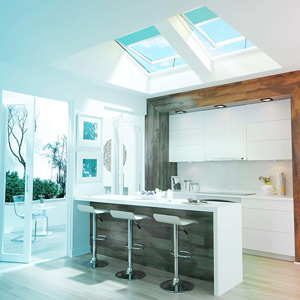

What the Tool Is For
The CRF Tool is intended to provide general guidance on suggesting a minimum Condensation Resistance Factor (CRF) based on a project-specific set of environmental conditions.
While not an absolute value, the CRF is a rating number obtained under specified test conditions to allow a relative comparison of the condensation performance of the product. It will provide a comparative rating of similar products of the same configuration and permit the determination of the conditions beyond which an objectionable amount of condensation may occur.
Some interpretative allowances may need to be made in comparing products of dissimilar type or configuration (e.g. wall sections versus operating windows or versus fixed glazing). Condensation in the field can be a result of many variables. Thermal conductivity of surrounding building construction, interior/exterior trim, humidification control, and the method of heat distribution on the interior plane of the assembly will impact its overall performance. Conditions which may affect interior surface temperatures include (but are not necessarily limited to) the following:
- Type of wall construction and material(s) used therein
- For cavity walls, location of thermal barrier in the product with respect to the wall cavity
- Closed drapes and/or shades
- Depth of reveal (recess at stool, jambs, and head)
- Positive exterior wind pressure or negative pressure within the building which may increase infiltration of cold air
- Height of product above grade
- Location of surrounding buildings and type of surrounding terrain
- Wind velocity
- Solar radiation and orientation
- Water vapor pressure and temperature indoors
- Water vapor pressure and temperature outdoors
- Rate and amount of water vapor released to interior
CRF Calculator
Simply enter the project-specific environmental information in each of the three boxes requiring user data input:
- Outdoor Air Temperature (°F)
- Indoor Air Temperature (°F)
- Indoor Relative Humidity (percentage entered as a whole number)
Once all data has been entered, the suggested CRF is calculated and shown.
Outdoor Air Temperature (F)
Recommend using ASHRAE’s 99.6% Heating DB climatic design data from closest weather station.
Refer to Major U.S. Cities and State Capitals chart.
Indoor Air Temperature (F)
Indoor Relative humidity
Percentage should be entered as a whole number.
Dewpoint Temperature
—
CRF
—
More Information
The calculations used to determine the CRF rating are based on the procedures outlined in AAMA 1503-09, Voluntary Test Method for Thermal Transmittance and Condensation Resistance of Windows, Doors and Glazed Wall Sections, an FGIA standard. AAMA 1503-09 is available for purchase in the FGIA Store.
How to Perform CRF Calculations
Download this free Condensation Resistance Factor Calculator User’s Guide for more information on how the CRF calculations are derived.



